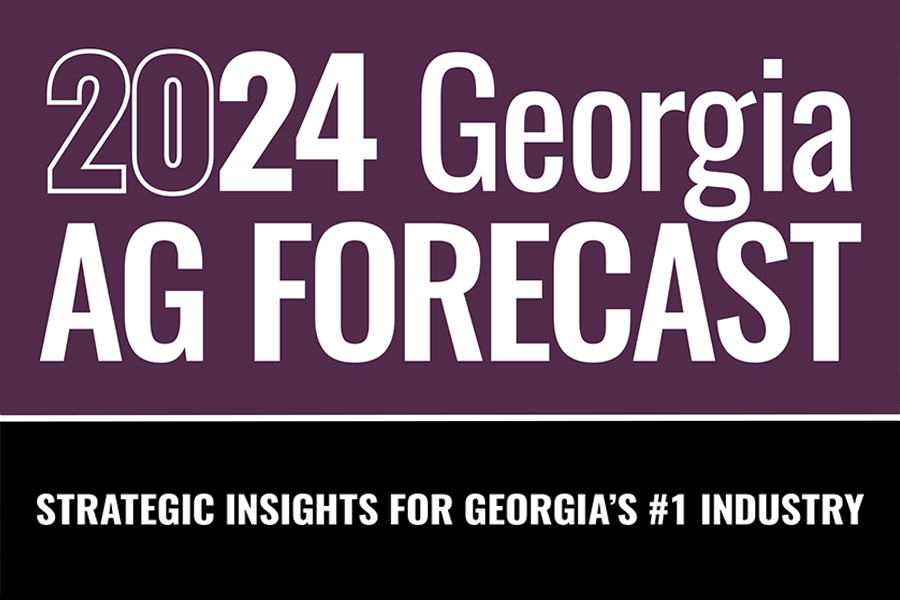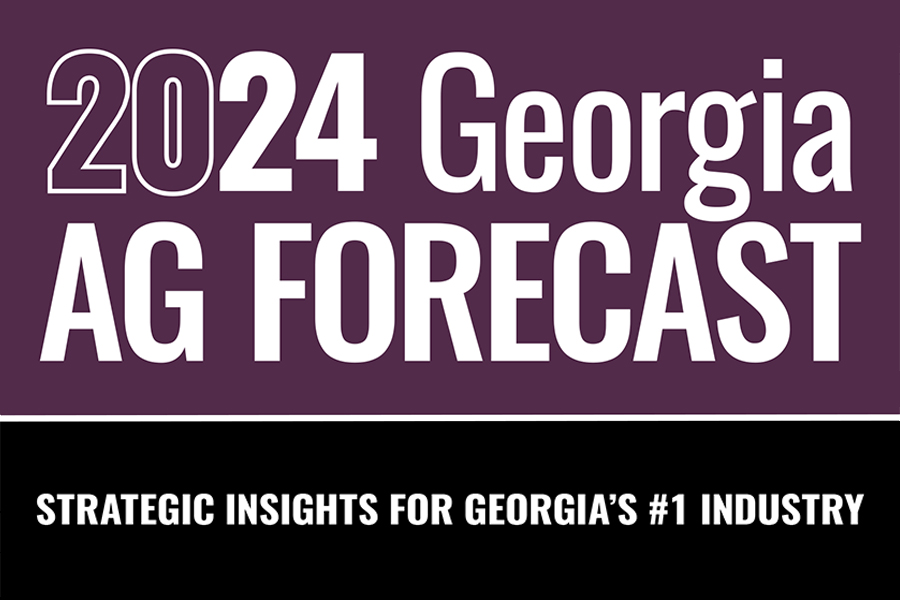Agricultural and Applied Economics
-

AP 132-01
2024 Georgia Corn Production Guide
This is the Extension Corn Team’s full production guide for recommended practices to plant and maintain a corn crop in Georgia. Topics include agronomic practices, growth and development, fertilization, irrigation, weed, insect and disease management, harvesting and drying, protecting stored corn, soil health, and economics/budgets.
G. David Buntin, Eric P. Prostko, Robert C Kemerait Jr, Amanda R Smith, Ronald Scott Tubbs, Wesley Porter, Guy Hancock, Henry Y. Sintim, Glendon H. Harris, and Michael D Toews
|
-

This publication describes Microsoft Excel workbooks designed to calculate the effects of dividing ingredients into above- and below-average portions (2-bin method) and the costs of providing nutrients at specified confidence levels.
Gene M. Pesti and Greg Colson
|
-

AP 133-1
Hurricane Helene Impact Report
We estimate that Hurricane Helene’s damages to Georgia agriculture and forestry will cost the state economy at least $5.5 billion in 2024 present value. This figure represents the sum of direct crop losses, losses to firms that support agriculture and forestry, losses to workers in those and related industries, and the recovery and restoration costs that firms in these industries will face. The Georgia Forestry Commission is a collaborator with UGA on this publication.
Timothy Coolong, J.Michael Moore, Jake Price, Lenny Wells, Casey W. Ritz, Wade B. Parker, Jillian Bohlen, Lawton Stewart, Greg Colson, Walter Scott Monfort, Todd Applegate, Mary Sutton, Michael Adjemian, Camp Hand, Ted McAvoy, Zilfina Rubio Ames, and Ping Yu
|
-

AP 130-3
2025 Georgia Ag Forecast
Each year, UGA’s agricultural economists develop a comprehensive overview to help various sectors of the agriculture industry navigate the year ahead. As Georgia’s land-grant university, the University of Georgia conducts cutting-edge research on critical and emerging issues that are important to the agriculture industry. From this research, UGA provides the best information and education available to producers and constituents to equip them with knowledge and decision-making tools for their businesses.
Esendugue Greg Fonsah, Amanda R Smith, Vanessa P. Shonkwiler, Ben Campbell, Yangxuan Liu, John Salazar, Daniel Remar, William Secor, Guy Hancock, Yanshi Li, and Angie Im
|
-

AP 129-2
2024 Ag Snapshots
Ag Snapshots is a brief focus on Georgia’s agricultural industry and are based on the Georgia Farm Gate Value Report from the previous year with helpful infographics and maps. Years prior to 2023 can be accessed on the Agribusiness and Economic Development publications site: https://caed.uga.edu/publications/georgia-agricultural-statistics.html
Sharon P Kane
|
-

AP 130-2-01
2024 Overall U.S. and Georgia Economic Outlook
Each year, UGA’s agricultural economists develop a comprehensive overview to help various sectors of the agriculture industry navigate the year ahead. As Georgia’s land-grant university, the University of Georgia conducts cutting-edge research on critical and emerging issues that are important to the agriculture industry. From this research, UGA provides the best information and education available to producers and constituents to equip them with knowledge and decision-making tools for their businesses. Forecast by Jeffrey M. Humphreys, UGA, Director of the Selig Center for Economic Growth. The overall U.S. outlook projections include: 1. The 2024 economic forecast for Georgia calls for an economic slowdown but not a recession. We estimate the probability of recession at 33% for Georgia compared to just under 50% for the United States. 2. Georgia’s lower risk of recession reflects recent economic development success and stronger demographics. 3. The resilient labor market and the strong financial position of households are two reasons why we expect continued economic expansion. 4. Inflation will continue to ease but will not fall to levels experienced before the pandemic. 5. The main downside risks to growth are missteps by the Federal Reserve, a financial crisis, and an energy-price shock. Each of these risks alone could trigger a recession.
Ben Campbell
|
-

AP 130-2-02
2024 Georgia Agriculture Outlook
1. Food and commodity prices are expected to return to prepandemic levels.
2. Coupled with increasing costs, the nation’s farm income is expected to decline by 17% between 2022 and 2023.
3. Georgia’s 2023 net farm income is likely to return to the 10-year average of about $3 billion.
4. Potential upsides for Georgia are the possibility of higher demand for poultry, cotton, and peanuts from domestic and overseas markets.
5. Risks to this forecast are higher input costs, geopolitical risks, cheaper imports of some commodities, and a global economic slowdown.Ben Campbell and Gopinath (Gopi) Munisamy
|
-

AP 130-2-03
2024 Inputs and Production Expenditures Forecast
1. Farm input expenses continued to increase in 2023; when adjusted for inflation, they remained below 2014’s record highs.
2. Notable changes in 2023 included reductions in farm interest and fertilizer expenses.
3. Total production expenses are forecast to decline slightly with the largest changes in interest, fertilizer, and pesticide categories.Ben Campbell and Guy Hancock
|
-

AP 130-2-11
2024 Vegetables and Pulses Outlook
1. Total harvested area of vegetables and pulses decreased by 3.2% from 2021 to 2022, and fresh and processed vegetable area harvested decreased by 5.1%; the situation is expected to deteriorate in 2024.
2. 2022 total imports of vegetables and pulses were $18.7 billion, an increase of 11.1% compared to 2021; this import trend is expected to continue.
3. Per capita vegetable consumption may increase in 2024 but will not attain the level seen in the years 2020–2022.Esendugue Greg Fonsah and Ben Campbell
|